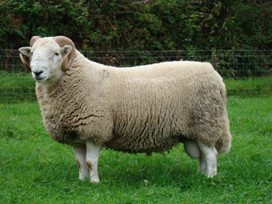Index Customisation Tool
 Testing Ideas Relating to Breeding Indexes using the Index Customisation Tool
Testing Ideas Relating to Breeding Indexes using the Index Customisation Tool
This technical note was written to assist Signet clients using the Index Customisation Tool.
The Index Customisation Tool was developed in two parts.
1). “Custom Indexes” Which enables breeders to create new indexes and variations to existing ones.
2). “Apply Indexes” Which enables breeders to compare the indexes they have created with Signet’s standard indexes.
A Note of Caution
Index creation is a complicated and technically challenging procedure. Index weightings tend to be calculated either to optimise economic returns (economic indexes) or to influence the degree of change desired for specific traits (a desired gains approach), an approach often used when the economic merit of traits is hard to define.
In practice most of Signet’s breeding indexes are a blend of these two approaches that incorporate index weightings that were determined to achieve a desired level of gain in specific traits, taking into account sound economic principles in establishing these weightings.
The Challenge of Interpreting Raw Weightings
In this Technical note we will provide the raw weightings for a number of breeding indexes. This provides a starting point for those breeders considering customising their indexes that they use.
However, raw index weightings are notoriously hard to interpret in isolation.
Index weightings take into account:-
1). The heritability of the trait
2). The units in which the trait is measured
3). The genetic variation in that trait
3). Traits that are positively or negatively correlated to the trait of interest. This is a massive challenge, which needs to avoid “double counting” the value of closely correlated traits (such as 8 Week Weight and Scan Weight) as well as mitigating against the unintended consequences of selection when traits are correlated and thus selection for one trait will change another.
4). Economic values which might indicate that while a trait is measured and interesting to ram breeders, it is not particularly valuable to commercial flocks.
5). The number of measurements available for a specific trait. A trait may be extremely valuable to industry, but not widely measured. To place a high emphasis on this trait can make the index less stable over time and a less fair comparison of genetic merit across a breed. For this reason, index weightings for certain traits may be reduced.
To summarise, simply looking at raw index weightings and saying one trait is several times more important than another is likely to an oversimplification of its true impact on the overall breeding goal. Such observations won’t indicate the degree a trait will change when the index is applied, to do this a comparison of different indexes is required.
Starting Points
While the Index Customisation Tool enables breeders to create indexes from scratch, a better place to start is by creating a customised index based on current index weightings. Users can then halve or double the weighting for an individual trait to see its impact.
Please note index weightings are specific to the genetic parameters (heritabilities and correlations) used to calculate breeding values for a specific breed. These values are pre-programmed into this tool and are different for each breed.
The following starting points may prove useful
Terminal Sire Breeds as part of the National Terminal Sire Evaluation
Suffolk, Charollais, Texel, Dorset, Meatlinc, Hampshire Down, Beltex, Blue Texel, Bleu du Maine, Vendeen, Shropshire, Southdown.
Please note these index weightings are not currently used for numerically small terminal sire breeds, which are analysed on an individual breed basis. Breeds like the Oxford Down, Ile de France, Rouge, Berrichon, Ryeland and Dorset Down will be included in this analysis in the future.
|
|
Eight Week Weight |
Mature Size |
Litter Size |
Maternal Ability |
Scan Weight |
Muscle Depth |
Fat Depth |
CT Lean Weight |
CT Fat Weight |
CT Muscularity
|
|
Terminal Sire Index |
|
|
|
|
|
|
|
|
|
|
|
Maternal Index |
|
|
|
|
|
|
|
|
|
|
Hill Breeds as part of the New National Hill Sheep Breeding Evaluation
This new style of evaluation will be used in July 2020 for Beulah, Hardy Speckle, Hebridean, Herdwick, North Country Cheviot Hill, North Country Cheviot Park, Roughfell, South Country Cheviot, South Welsh Mountain and Welsh Mountain
We plan to talk to Scottish Blackface and Swaledale breeders this autumn about bringing it in for these breeds in 2021.
|
|
Lamb Survival |
Eight Week Weight |
Mature Size |
Litter Size Born |
Maternal Ability |
Scan Weight |
Muscle Depth |
Fat Depth |
|
Hill Index |
Under Development |
0.67 |
-2.11 |
10.60 |
3.23 |
4.63 |
2.94 |
-0.48 |
Longwool Crossing Breeds
These index weightings are used for Bluefaced Leicester breeders.
|
|
Eight Week Weight |
Mature Size |
Litter Size |
Maternal Ability |
Scan Weight |
Muscle Depth |
Fat Depth |
CT Lean Weight |
CT Fat Weight |
CT Muscularity
|
|
Bluefaced Leicester Index |
|
|
|
|
|
|
|
|
|
|
Maternal Breeds
Signet’s maternal, lowland breeds are currently analysed in separate, individual breeding programmes. The index weightings reported below are specific to the genetic parameters used and shouldn’t be directly compared. Examples of lowland maternal breeds include Lleyn, Romney, Exlana and Easycare.
|
|
Eight Week Weight |
Mature Size |
Litter Size |
Maternal Ability |
Scan Weight |
Muscle Depth |
Fat Depth |
CT Lean Weight |
CT Fat Weight |
CT Muscularity
|
|
Lleyn Index |
|
|
|
|
|
|
|
|
|
|
|
Romney Index |
|
|
|
|
|
|
|
|
|
|
|
Exlana Index |
|
|
|
|
|
|
|
|
|
|
|
Easycare Index |
|
|
|
|
|
|
|
|
|
|